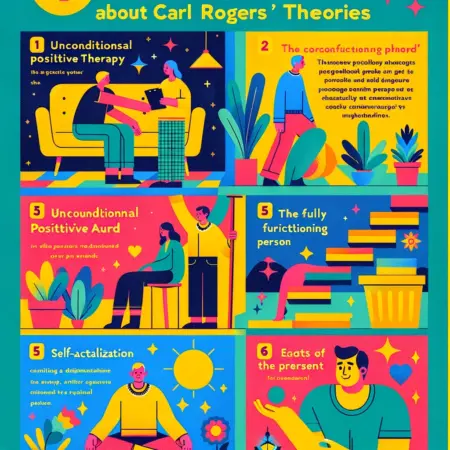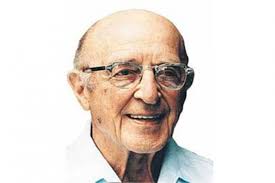Carl Rogers was born in Oak Park, near Chicago, in 1902. He became a pastor and took his studies to theology, when he became interested in psychology. In the new career, the first focus of work were children subjected to abuse and mistreatment. At that time he began to develop his theories on personality and therapeutic practice. At the age of 40 he published the first book.Rogers was one of the first to record and film therapy sessions. He died of a heart attack in 1987 in San Diego, California.

Carl Rogers is considered to be the father of Person-Centered Approach.He is also called the founder of humanistic approach. He puts great faith in man, feeling that the individual can solve the vast majority of his problems. In the field of psychotherapy, he has evolved a very positive theory about personality development.In his book, “On Becoming a Person,” he gives expression to what he feels about the person.
In 1945, Carl Rogers became a professor of psychology at the University of Chicago and executive secretary of the Center for Therapeutic Counseling. He defined his method of client-centered therapy from the legacy of other theorists, notably Kurt Goldstein.
Carl Rogers Is The Fonder of Client-Centered Therapy (or Person).
A basic belief of Rogers is that the human body knows what is best for it.It has improved senses throughout the evolution of the species. Talk, smell and taste recognize as pleasant (pleasant taste and smell, for example) which is healthy. Likewise, our instincts are ready to value “positive consideration”.This new approach is a cooperation between psychologist and client, aiming development, and the discovery self-realization.
Client-centered Therapy viewed man in a global way, respected his individuality and believed in his potentialities. In his theory, Rogers believes that every organism (the experiencer) has a natural tendency to actualize, which will be promoted through the way in which his relationships develop.
In order for this , Rogers speaks of the need for a facilitating environment .
Unconditional positive consideration or unconditional acceptance –
Receiving and accepting the person as he is, without imposing conditions for that acceptance to occur. It is the warm welcome of their experiences, desires and anxieties without judgment or disapproval.For this theory, the conditions of personality change are broadly viewed and also apply the different factors such as family relationships, conflict resolution, education.With this, we can verify that a Person Centered Therapy is more than a set of techniques and norms, it is a way of dealing with the other without judgment or conditions for acceptance.
How Is The Highly Functional Person According To Carl Rogers
According to Carl Rogers, the personality traits that defined highly functional people are defined according to the following five characteristics.
Openness to experience
The personality of highly functional people is, according to Carl Rogers, very open to experience. It does not adopt a defensive attitude but prefers to explore new possibilities. That is why this type of personality is defined by the acceptance of the emotions associated with what is being lived.
Existential lifestyle
This characteristic has to do with the tendency to assume that it is oneself who has to give meaning to the experiences that are lived in each moment.he lifestyle associated with this type of personality, for Carl Rogers, is characterized by avoiding the tendency to prejudge.
Self confidence
For Carl Rogers, the fact of embracing a free way to live life. The idea is that, no one knows better than one’s own way of living life. One does not tend to rely on codes of behavior imposed from external sources .
Freedom of choice
The creative and innovative way of being highly functional personality makes these people are able to find new behavioral options where apparently there are only a few.
Personal development
Personal development is the vital engine of highly functional people . It is lived as a process of constant change, in which a definitive final goal is never reached but it is passed from one stage to another.
